The very first illustration of Hypsilophodon that I ever laid eyes on depicted it as a very lizard-like animal perched high on a tree branch, an erroneous notion that arose back in 1912 and persisted until 1971 when it was finally debunked—although that didn’t stop children’s dinosaur books from continuing to portray Hypsilophodon as arboreal until well into the 1980s. We know now that it was a very capable ground dweller, adapted specially for running swiftly. Its precise phylogeny is an ongoing subject of debate; some experts have placed it outside of Ornithopoda altogether, while others have recovered Hypsilophodontidae as the sister taxon of Iguanodontia.
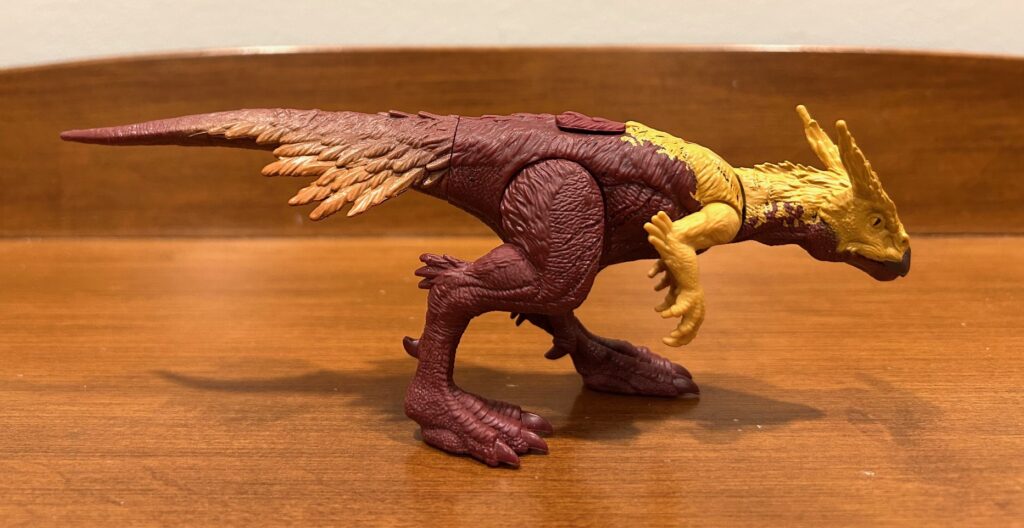
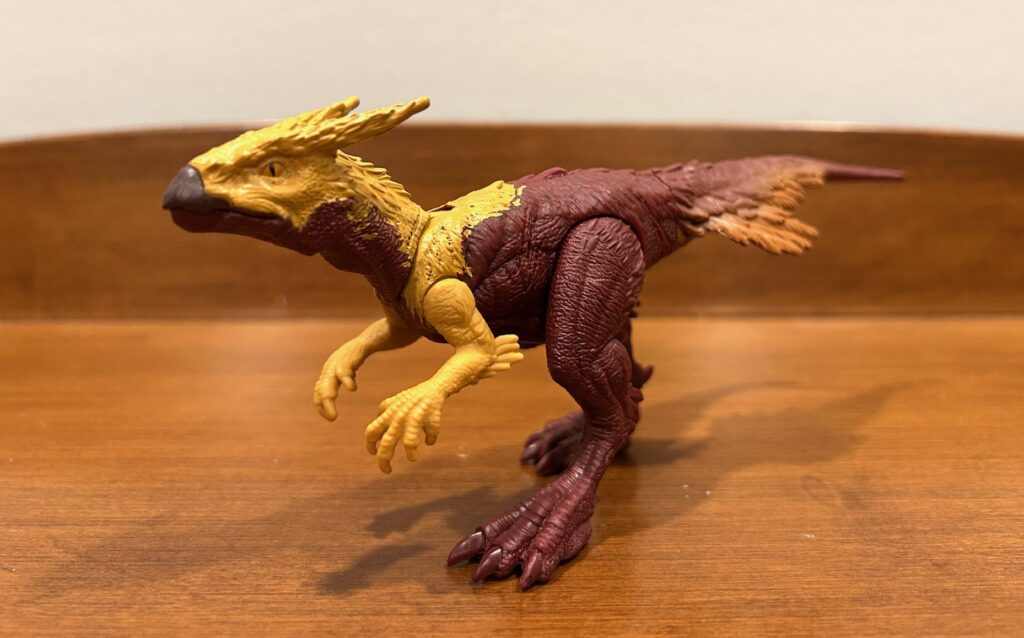
Small herbivorous (or possibly omnivorous) dinosaurs receive far fewer toys than bigger and more impressive ones, and Hypsilophodon is no exception in spite of the fact that it is a relatively famous English species known from multiple specimens. Up until this year, the most successful and widely available product was the family of four released by CollectA back in 2012. Now we have Mattel’s version, part of their Danger Pack series.
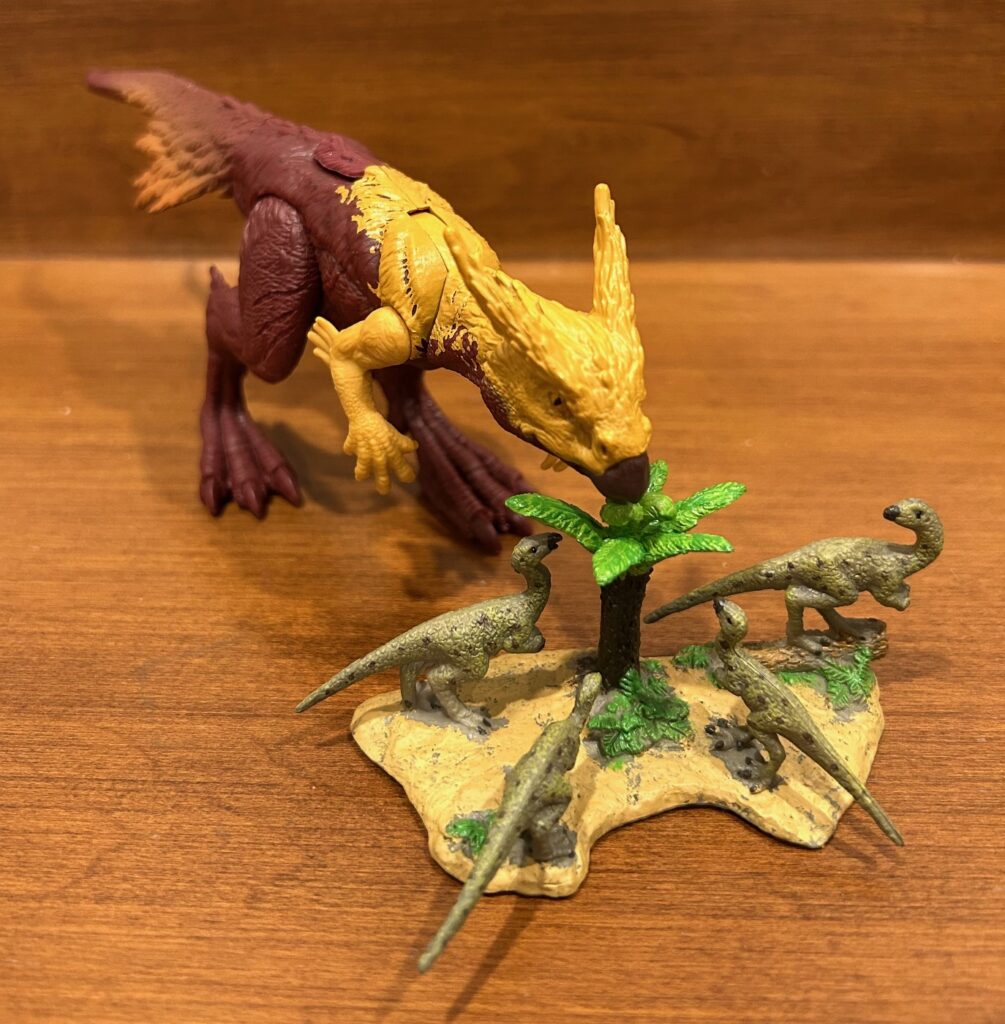
This toy measures slightly more than 19 cm long and stands about 7 cm tall at the hip. Its main colours are dark red and amber with light orange eyes, a dark brown upper beak, and dull orange tail feathers. Not exactly what you’d call a pretty colour scheme, but it does stand out among the other small Mattel toys. Shame that the lower beak was not painted brown too.
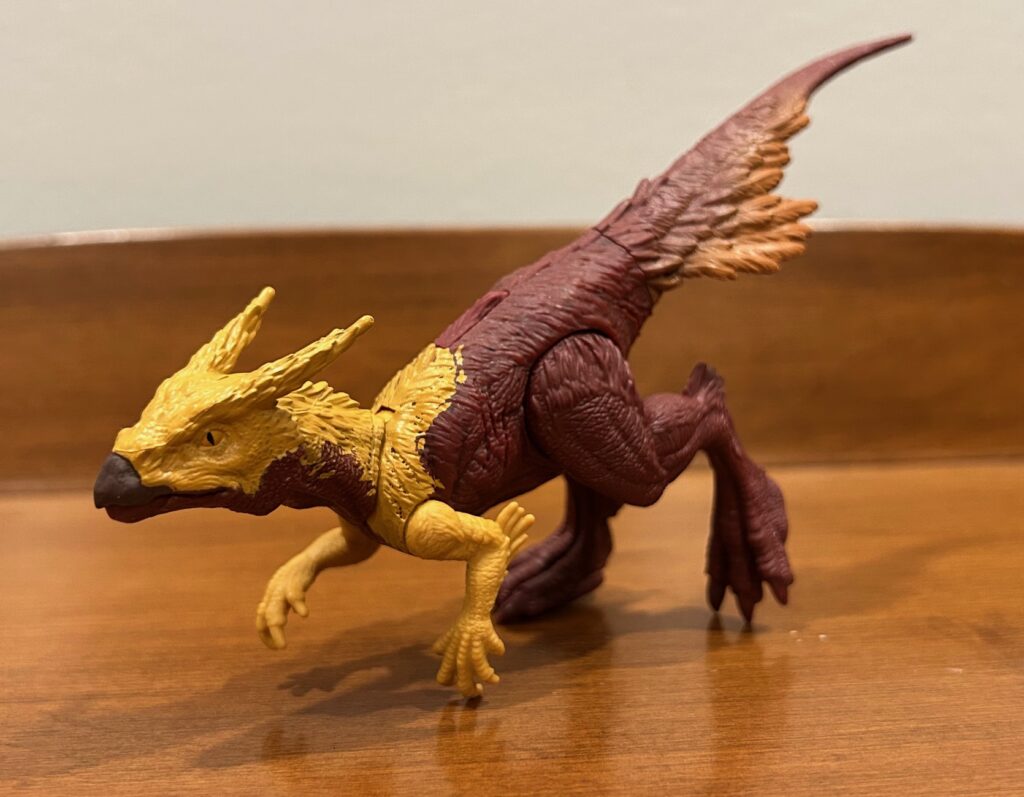
The articulation here is what you’d expect. The limbs rotate at the shoulders and hips, the base of the neck is hinged, and the tail rotates pointlessly. The slide-up scan code is located on the back and the JW logo is sculpted on the sole of the right foot.

While Hypsilophodon has long depicted as a scaly animal, the discoveries of Kulindadromeus and Tianyulong have led to speculation that other small herbivorous dinosaurs could have been covered in fuzzy feathers as well. As such, this toy is a weird-looking mishmash of skin and plumage. The limbs are mostly scaly and wrinkly, but have patches of feathers on the back of the thighs and tufts jutting out from the elbows and the heels. The back is shaggy, but the rest of the torso is bare. The tail boasts the biggest, most impressive feathers, yet the tip and underside utterly lack them. And finally, the back of the neck and the cranium are feathery, with a pair of enormous, pointed tufts growing out from the brow. Combined with the large eyes and the beak, it looks very owlish or eagle-ish.
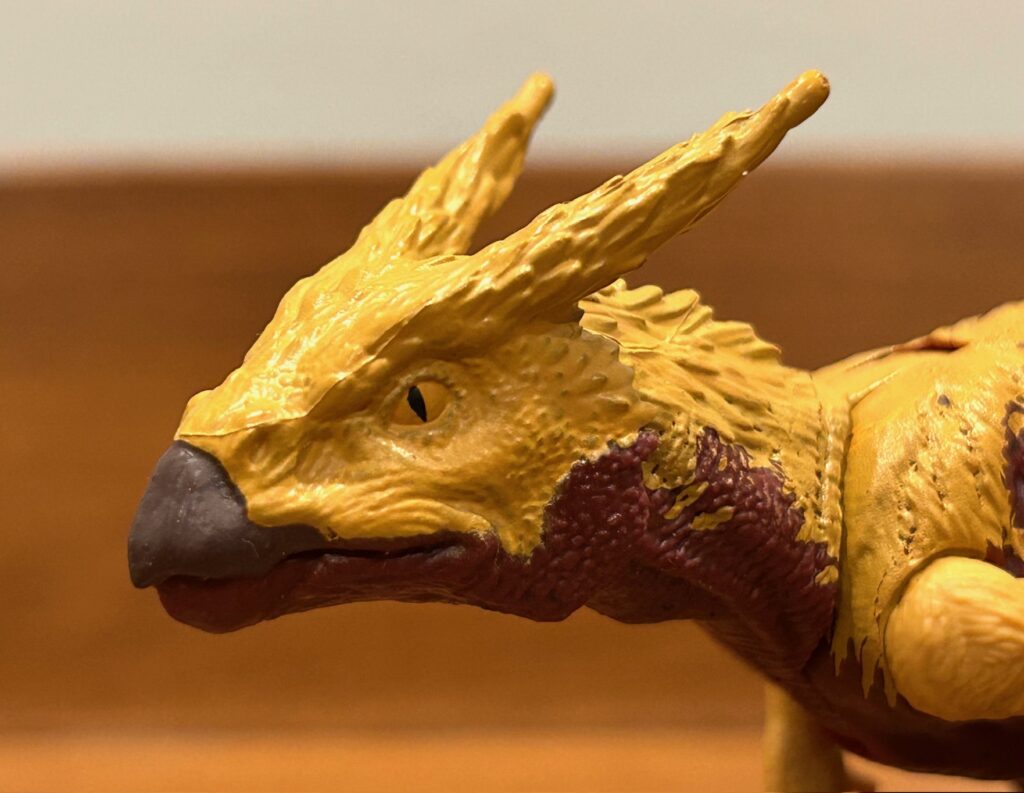
Adding to the Hypsilophodon’s intimidating appearance are the large curved claws on its hands and feet and the visible claw scars on its flanks and the right thigh. Lay people could easily mistake this toy for a rugged carnivore.
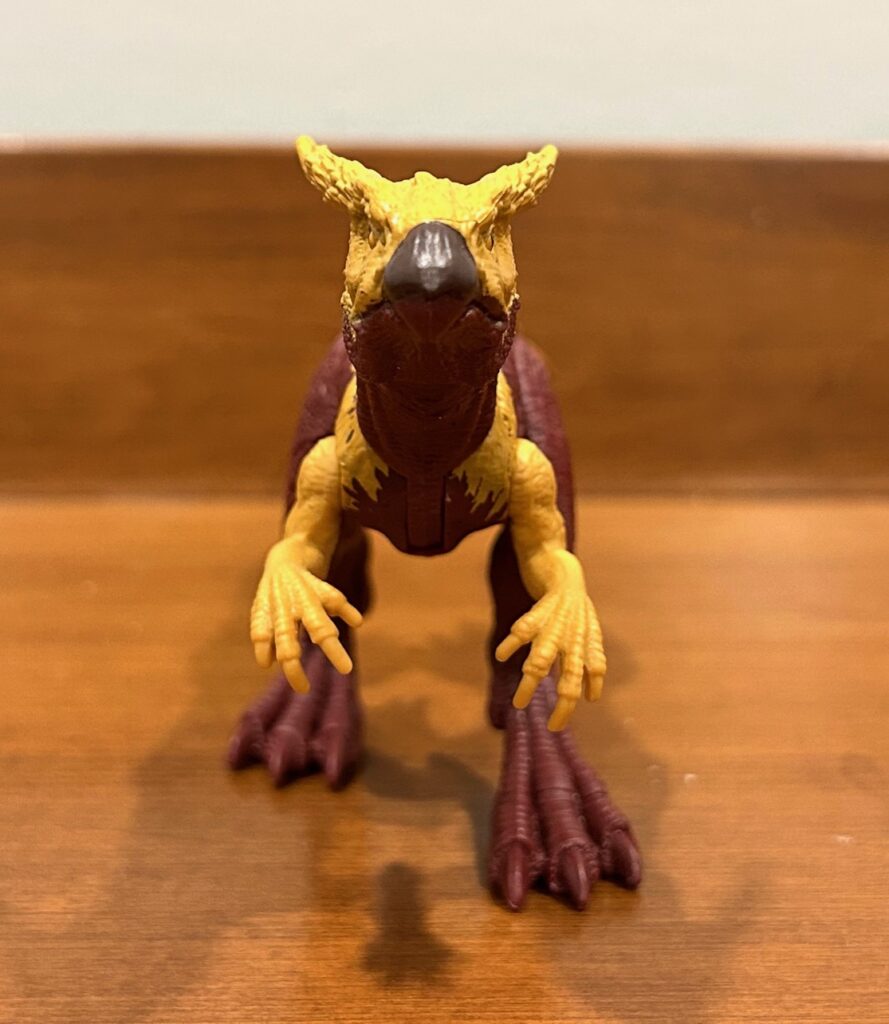
Peculiar plumage aside, there are quite a few glaring inaccuracies to be found on this toy. The head is oversized and the neck is too short. The arms are too small and the fifth digits ought to be tiny, sticking straight out to the sides, and without claws. The feet are huge and the first digits should be longer and pointing downward instead of curved back like a theropod’s. And finally, the tail is too short. But that’s Mattel for you, and chances are you won’t be buying this toy for its museum quality.
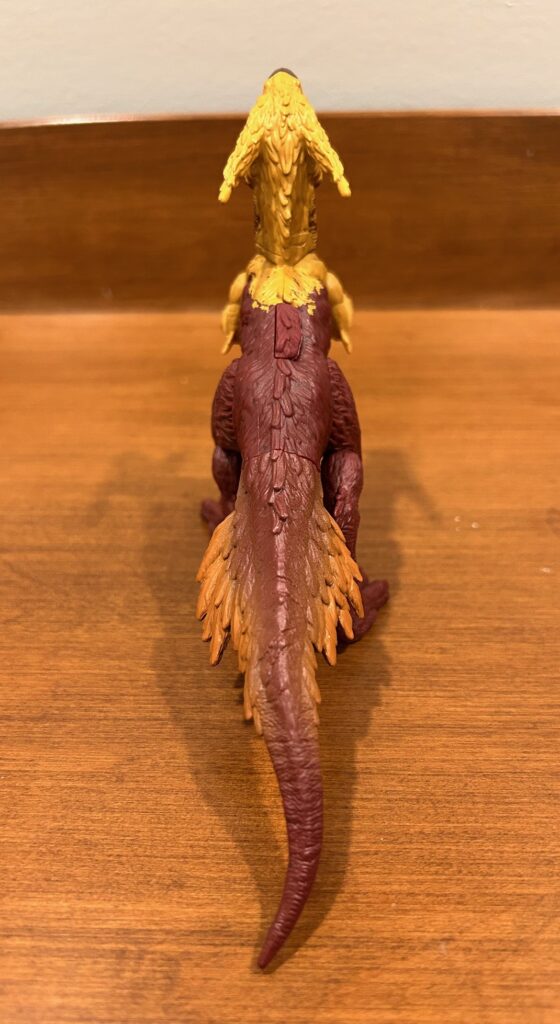
Overall, this Hypsilophodon is a fun, relatively unique, and pleasingly weird-looking addition to the Jurassic World ranks. I like it.
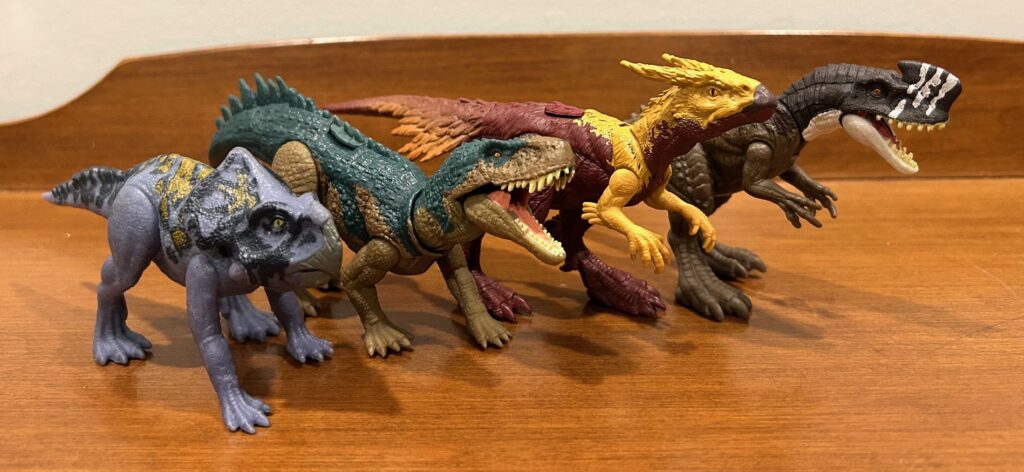
Disclaimer: links to Ebay and Amazon on the DinoToyBlog are affiliate links, so we make a small commission if you use them. Thanks for supporting us!




Nice to see this one reviewed. Worth mentioning the design was definitely pulled from the Isle game’s take on it (except the colors are different). From what I recall regarding the discussion in the 2025 JW thread about this one, the Isle design was based on a real bird too (though I don’t remember which one).